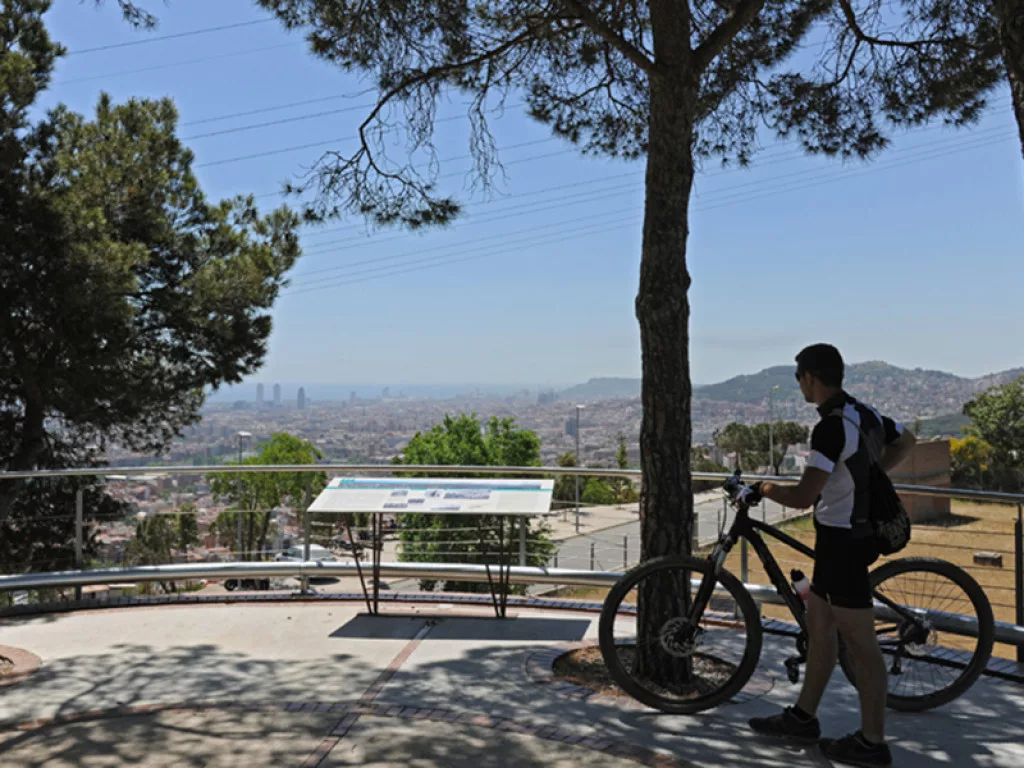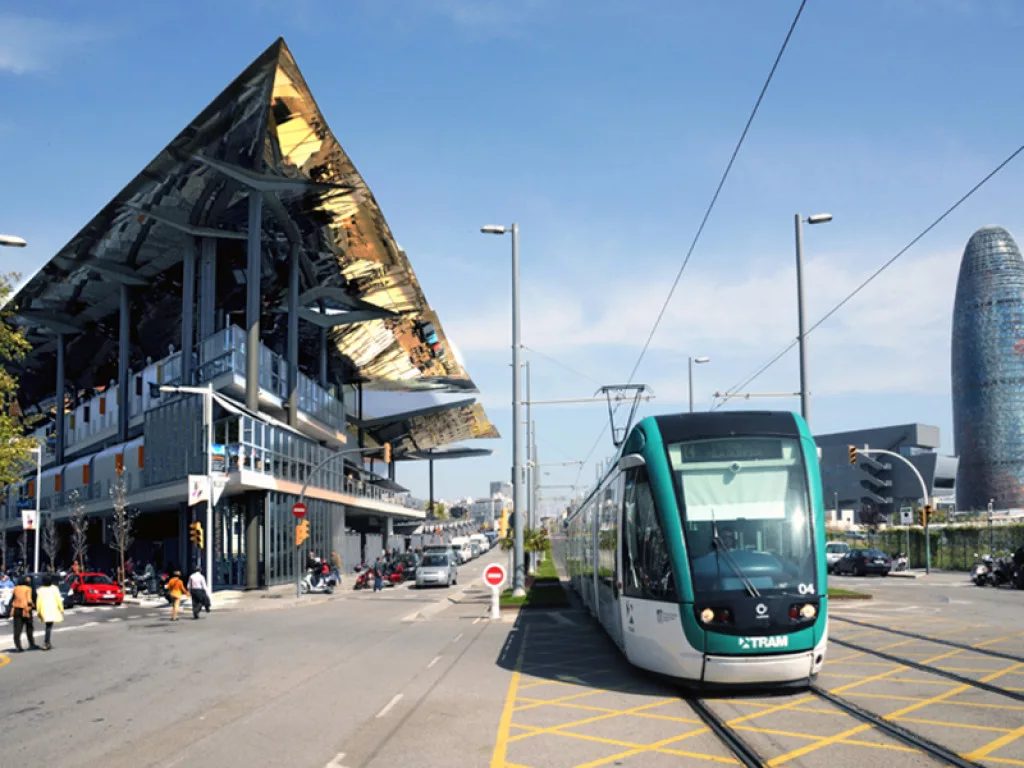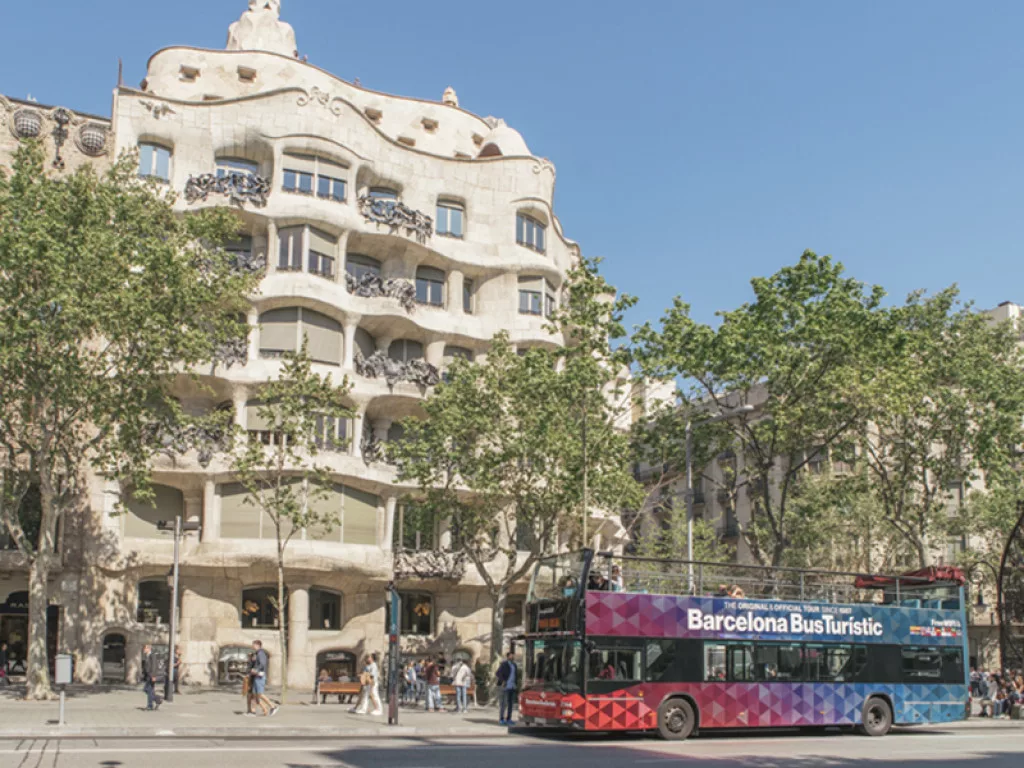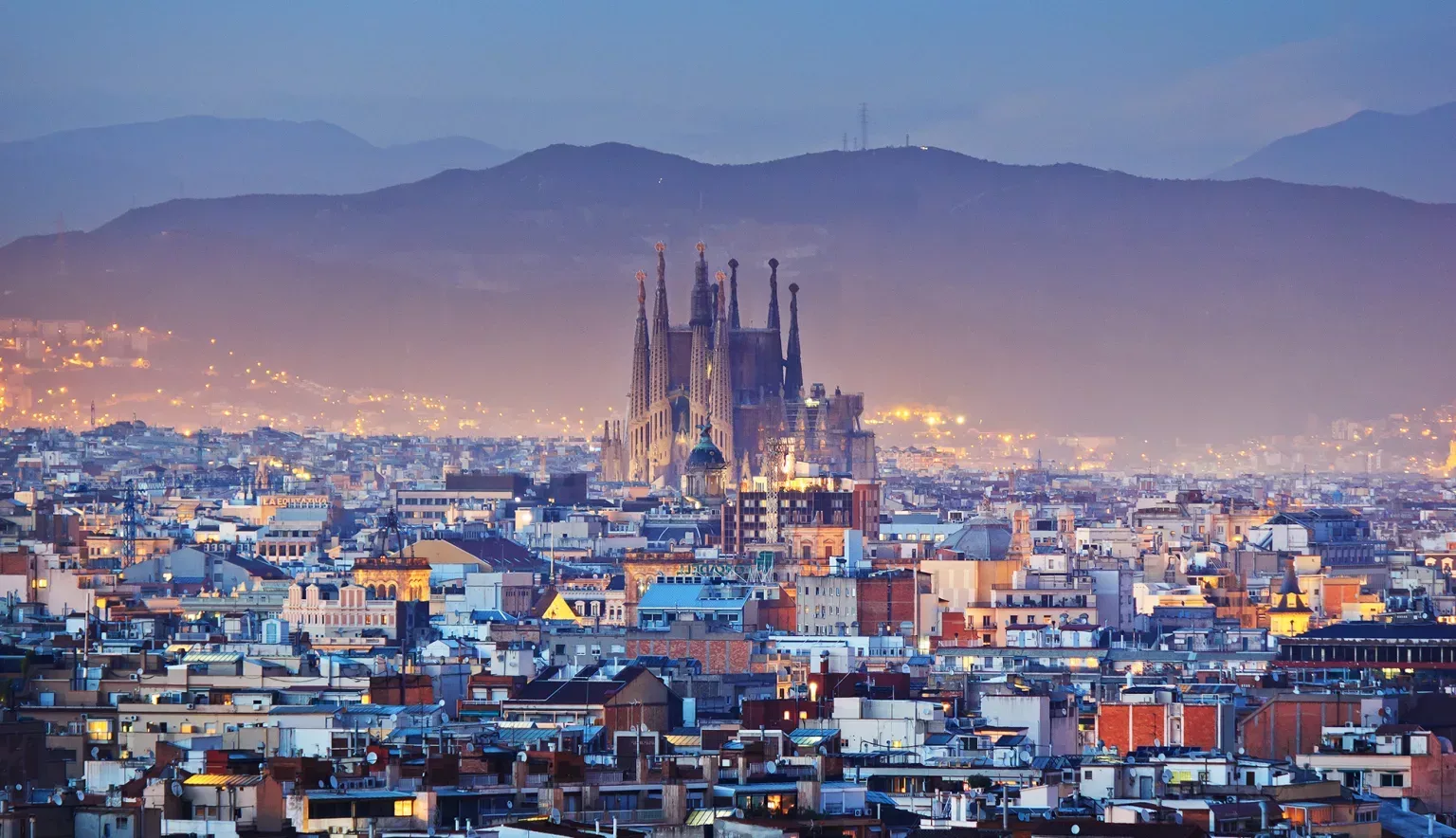Intoxicating Barcelona promises to satisfy every appetite whether culinary, cultural or natural. Take a dive into the charismatic Catalan capital.
BARCELONA
In 1862, Hans Christian Andersen described Barcelona as the “Paris of Spain”. Although such a label conveys the sheer visual splendour of Barcelona, it fails to capture the evocative, all-pervading culture and creativity that makes the Catalan capital so entirely unique.
A cosmopolitan lifestyle city, Barcelona has long been a magnet to generations of avant-garde creators and disruptors throughout the eras; from the city’s cultural heyday in the early nineteenth century that introduced the likes of Gaudí, Pablo Picasso and Joan Miró, to the wave of digital nomads today that make Barcelona their temporary home. This cultural footprint has resulted in a legacy of world-class museums, galleries, and public art installations.
Barcelona is a city defined by its neighbourhoods, with each individual barri as distinctive as the next. Showcasing an eclectic array of architecture unparalleled by other global cities, wander from the city’s nexus in the tree-lined boulevard of Las Ramblas to the shaded beauty of the Gothic quarter, and encounter the bizarre modernist masterpieces of Gaudí. Elsewhere, Roman remains abound in Barcino and the Middle Ages is still tangible in towering 14th century cathedrals.
The city’s culinary reputation is unsurpassed – whether in Michelin-starred eateries to laidback late-night tapas bars amongst the sophisticated restaurants and boutiques of El Raval. Enjoy world-class gastronomy and staples of Catalan cuisine, including seafood, jamón, and other Spanish favourites such as paella and a tantalising array of tapas. The wine culture here is also not to be missed.
Aside from its cultural appeal, visitors mustn’t overlook the natural beauty of Barcelona’s location. As you might expect from a Mediterranean destination, Barcelona possesses a five-kilometre-long stretch of golden sun-soaked beaches, spanning from Barceloneta to Diagonal Mar. Meanwhile, the rolling backdrop of the forested Collserola hills are a hiker’s playground for those looking for brief reprieve from the pulse of the city.
TOURISM INSIGHTS: TURISME DE BARCELONA
Since 1993, Turisme de Barcelona (Visit Barcelona) has promoted the city as a tourist destination of choice. Today, the organisation is rethinking its model of tourism in line with the shifting priorities of modern travel.
Advocating a holistic vision of tourism that flourishes in alignment with the local population’s way of life and the aspirations of the city, Turisme de Barcelona follows a targeted approach strategically directed at each segment of tourism. From sustainable travel experiences to the ‘Barcelona Workation’ programme aimed at a generation of digital nomads, Communications Director Lali Ferrando tells us more.
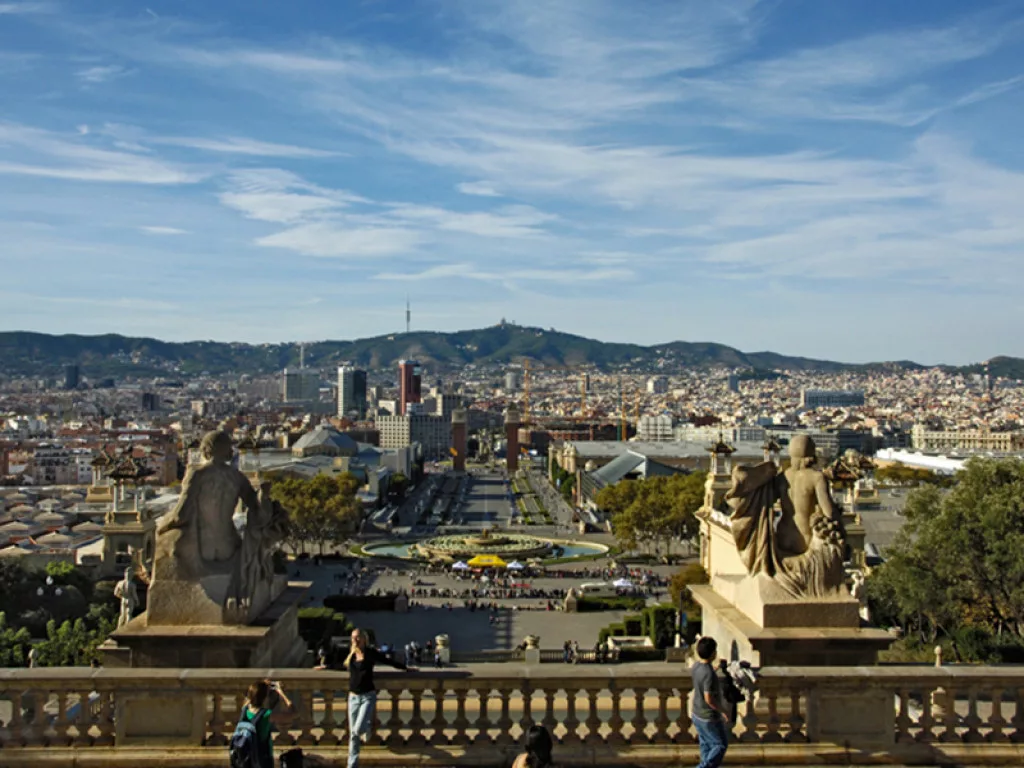
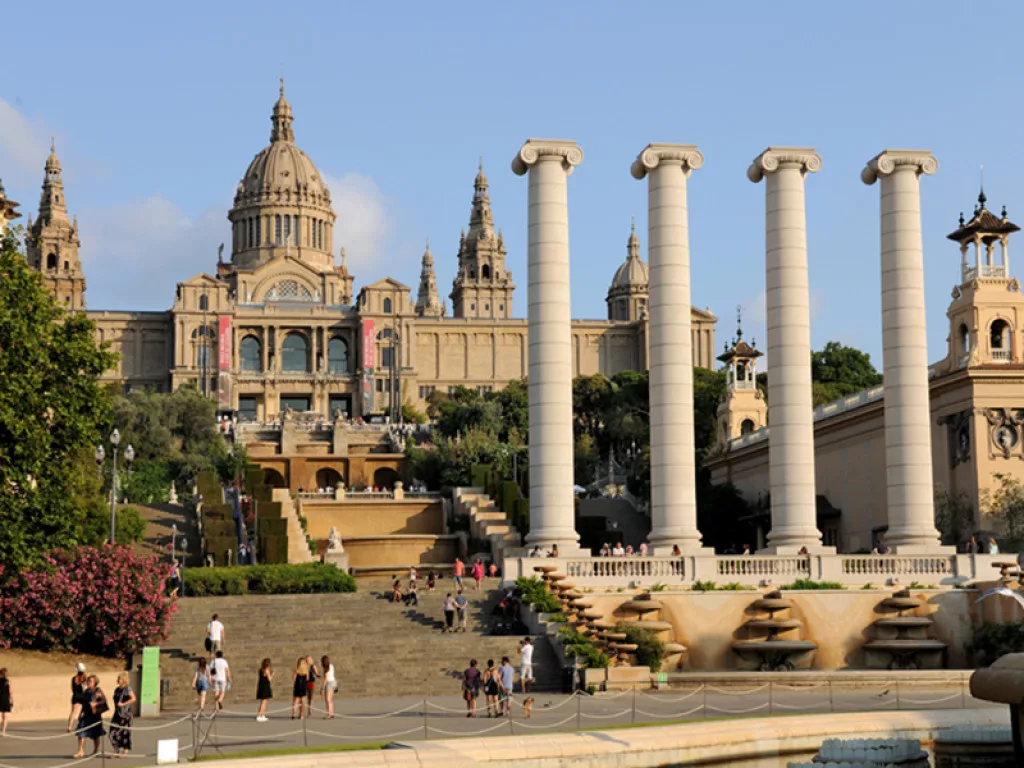
Q&A WITH LALI FERRANDO, COMMUNICATIONS DIRECTOR, TURISME DE BARCELONA
Can you talk us through the origins of Turisme de Barcelona and its initial vision?
Lali Ferrando, Communications Director (LF): Turisme de Barcelona was born in 1993 as a public-private consortium formed by Barcelona City Council, the Chamber of Commerce and a foundation that brings together hotels and other operators in the sector with the aim of promoting Barcelona as a tourist destination of reference. Now, the Consortium has the mission of making Barcelona an aspirational destination so that visitors can get to know, liveand return, with all of these reinforcing the brand and creating well-being and prosperity for all residents.
What are your organisation’s current goals?
LF: The objectives of Turisme de Barcelona have been evolving at the same pace as the city and its international projection. We are now focusing more on improving and diversifying the tourist offer and disseminating it to encourage more aspirational, higher quality, more respectful and more sustainable tourism. In short, we are working on different marketing strategies to increase the notoriety of Barcelona and reinforce its brand image while ensuring the customer’s experience before, during and after their stay. Barcelona wants to stand out in excellence and quality. We are impacting certain segments and markets to attract specific profiles that bring benefits to Barcelona at all levels. We have strategic lines set until 2023 to achieve a tourism model based on culture, identity, creativity, and talent that fits in with our lifestyle and our own idiosyncrasies. The challenge, in short, is to offer a quality product to attract quality tourism.
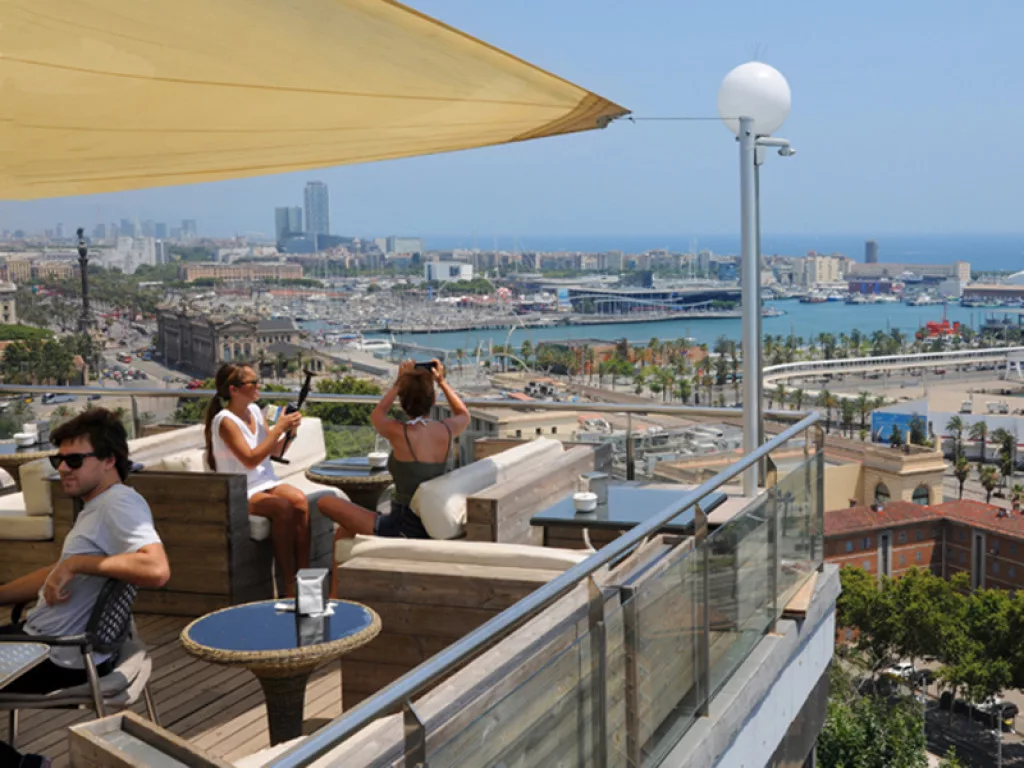
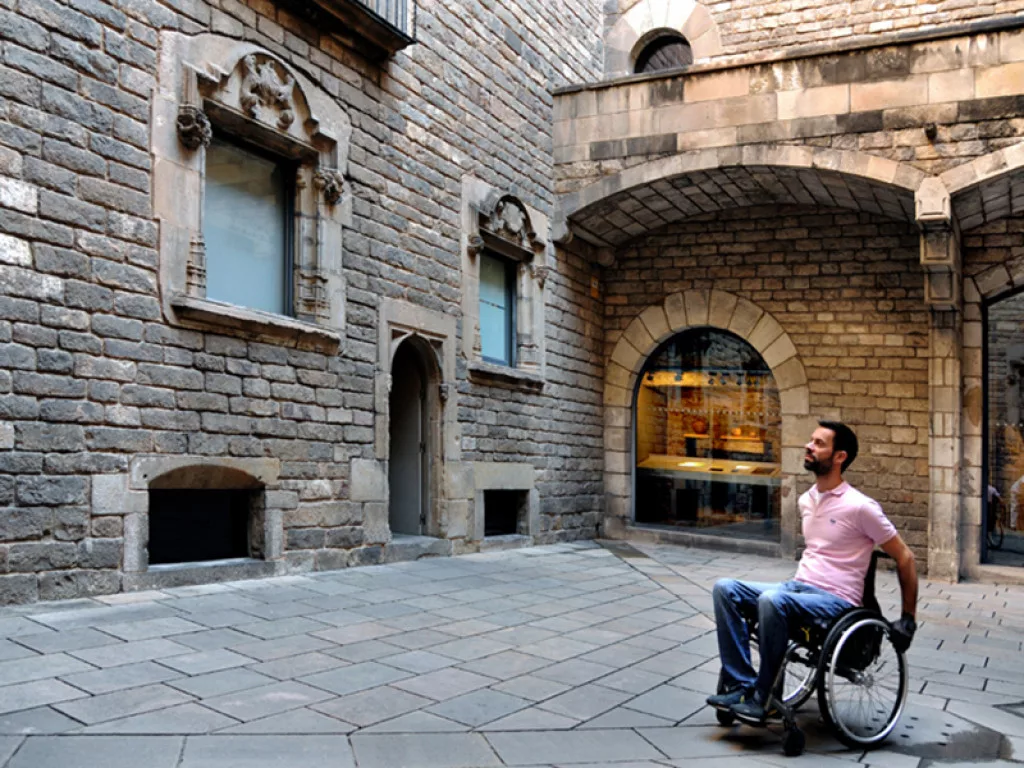
How do you market Barcelona as both a business and leisure travel destination?
LF: Turisme de Barcelona has a department specialised in the promotion of congresses and meetings that was a pioneer in Spain: the Barcelona Convention Bureau. This programme works intensively with professionals from the MICE sector to attract congresses and conventions from certain sectors including pharmaceuticals, medical, food and beverage, and technology. We also have a marketing department that works on product strategies for leisure tourism, but we do it in a segmented way and with a criterion based on the selection of the audience we want to target. We go to fairs, but we also organise workshops, fan trips and press trips, along with all the promotional actions we carry out with companies in various countries according to the objectives set out in the different Action Plans.
Are there any interesting upcoming events or occasions in the city that you would like to highlight?
LF: We work in a decentralised and diversified way. For instance, located in the heart of the technological district, the Torre Glòries, one of the most iconic buildings in the city, will open a new viewpoint with a 360° perspective of Barcelona, including a multimedia exhibition equipped with the latest audio-visual technologies, and the artwork of renowned Argentine artist Tomás Saraceno. The MOCO Museum has also opened its doors recently, and we will have a huge list of festivals throughout the year (Primavera Sound, Sonar, Pedralbes, Barcelona Obertura, Barcelona Light Festival, Pride Festival). We will also try to promote the city and its environment in areas where we stand out, such as wine tourism. Less than half an hour from the city centre, we have great winemakers who make excellent wines and sparkling wines that are part of our identity and offer great added value to the tourist experience. But we also have relevant architecture from great architects of Modernism and Noucentisme, unique in the world. In addition, we have mountain hiking and beach experiences, all within a radius of one hour.
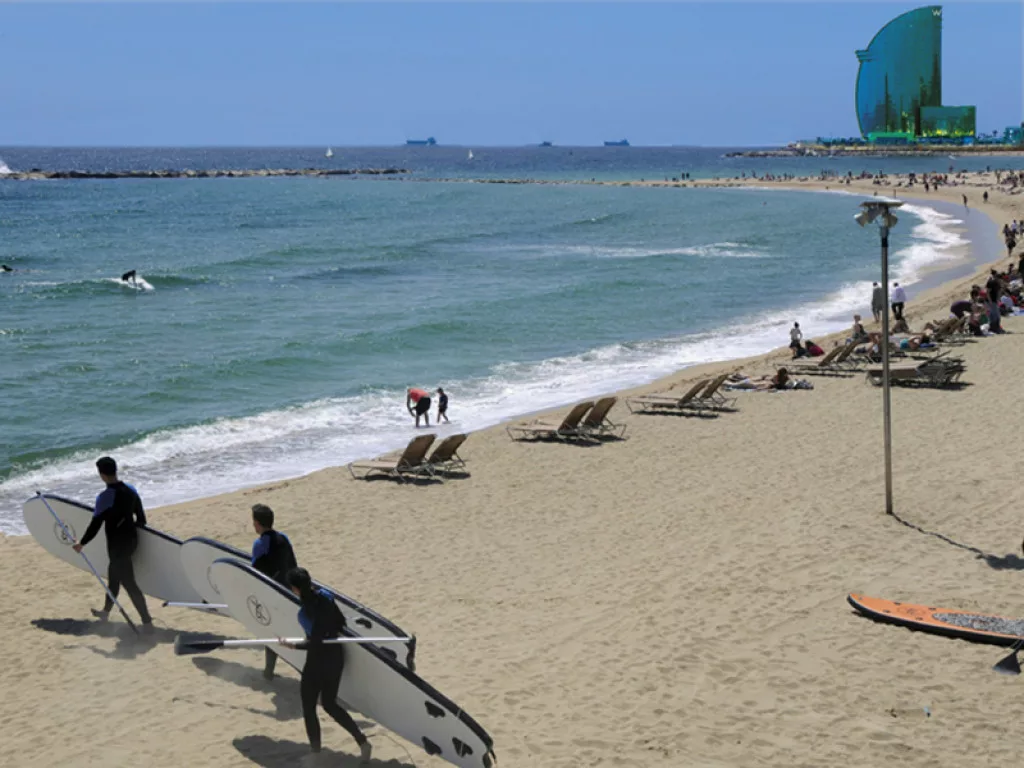
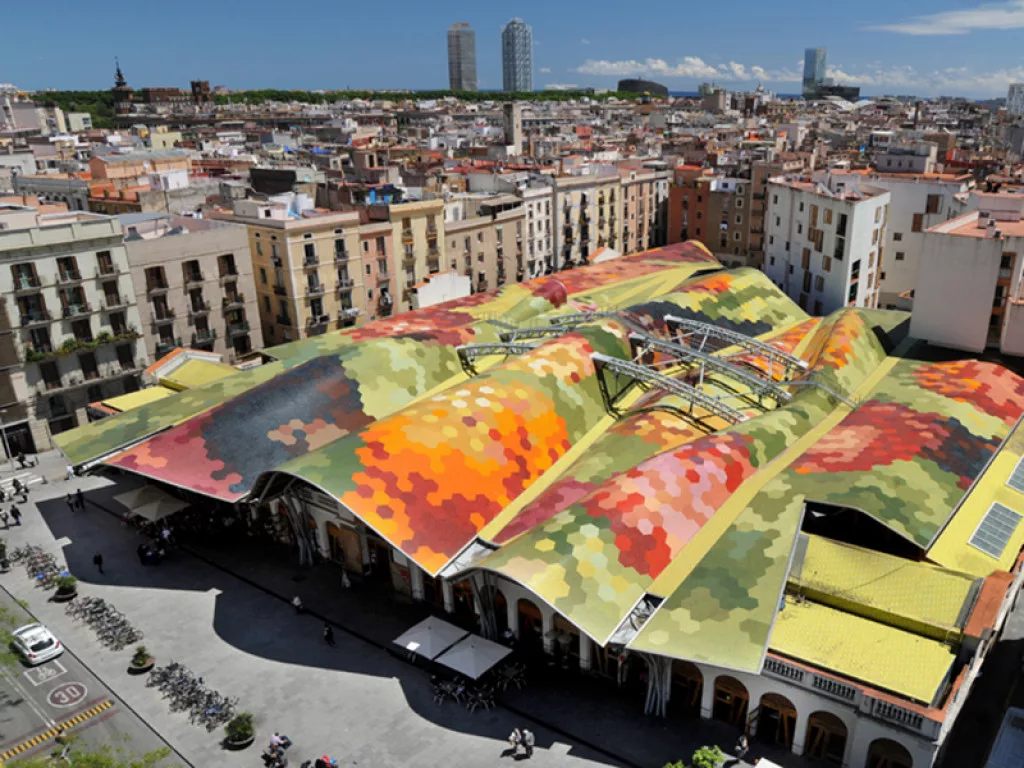
Why, in your opinion, should someone visit Barcelona?
LF: Barcelona’s magnetism is due to a set of factors. On the one hand, there are the physical and geographical aspects, with the sea and the mountains on both sides, and with the vocation of acting as a great metropolis of the Mediterranean. But we also have values that identify us as a society that make us attractive; we are an open, cosmopolitan city with a strong sense of modern, avant-garde hospitality, through which artistic movements and great artists have passed or emerged; a city with a talented and first-class human capital, where excellence in different fields stands out, whether in culture and architecture, as well as in catering and gastronomy, sports or entrepreneurship in companies and start-ups. We are a city with good services, traditional local trade, artists, professionals, and university students. This is a place where many things have happened and are constantly happening, with many attractions and a lifestyle that makes us different.
What trends are currently transforming tourism in Barcelona and how are you utilising them?
LF: The newest trends, after the pandemic, are based on the personalisation of experiences. The most vital are those related to well-being and health, including gastronomy and the Mediterranean diet or wellness tourism. There has also been a transformative trend in tourism that sees a change in the mentality and behaviour of tourists to a type of temporary resident visitor. This is very clear in the digital nomad who comes to work online in a city like Barcelona and who behaves like a resident, interested in the culture and identity of the place. We want this visitor, and we take great care of them because they bring us many benefits. In fact, we have created a specific programme for this segment, ‘Barcelona Workation’, providing the wide range of deals that the city offers to this target audience. A great transversal axis and common to all travel is the idea of sustainability and socio-economic respect for the environment. I would say that digitisation has also taken a particularly important leap forward. We aim to get to know the visitor better and add value to the tourism product according to this profile.
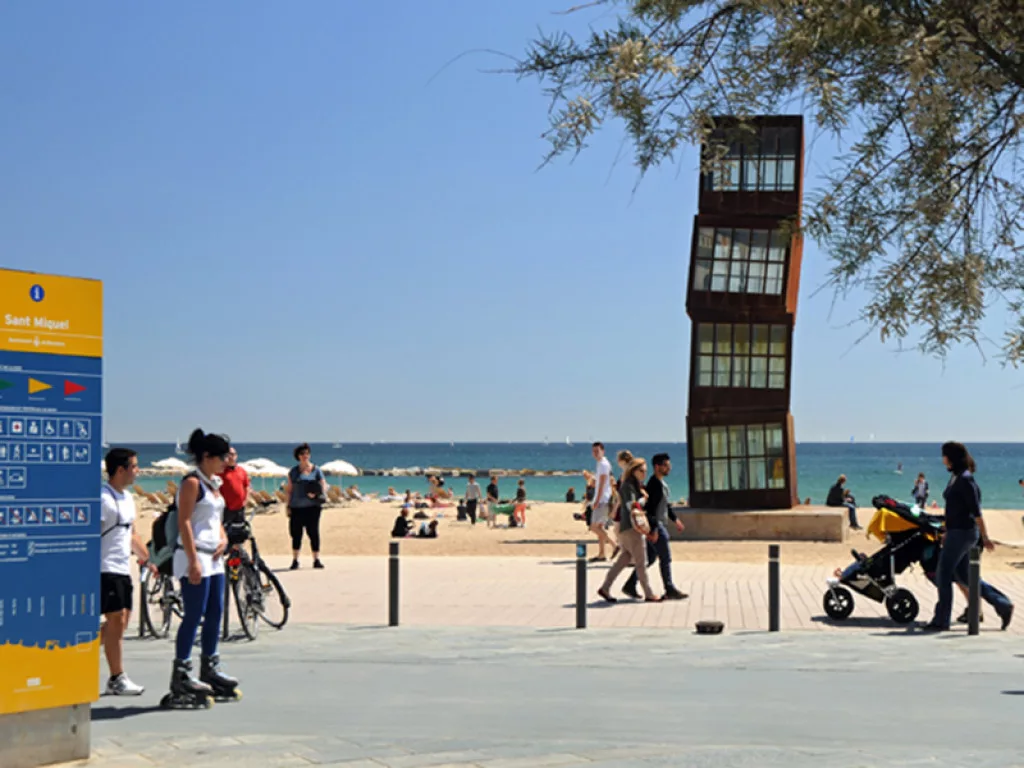
What are the greatest challenges experienced by the tourism industry in your region?
LF: As a country and as a region, the challenges are without a doubt in digitalisation and sustainability. The city and the country must go together, even more so in a destination like ours where the sea, the mountains, culture, leisure and business all come together… we have a mix of things that provides us a different and extremely attractive lifestyle.
Are you optimistic about the future of the tourism industry in Barcelona, particularly with regards to the COVID-19 pandemic?
LF: We will overcome the pandemic and also the unique moment that the whole travel sector is going through. I am optimistic that we will travel again, as we have always done when there have been other crises. I think the pandemic has given us the opportunity to rethink the tourism model, one of the most affected sectors, and work with other parameters aware of the risk factor and the need to insist on sustainability in order to continue to have the privilege of being able to travel to other places and cultures. Travelling is something inherent in the spirit of human knowledge.
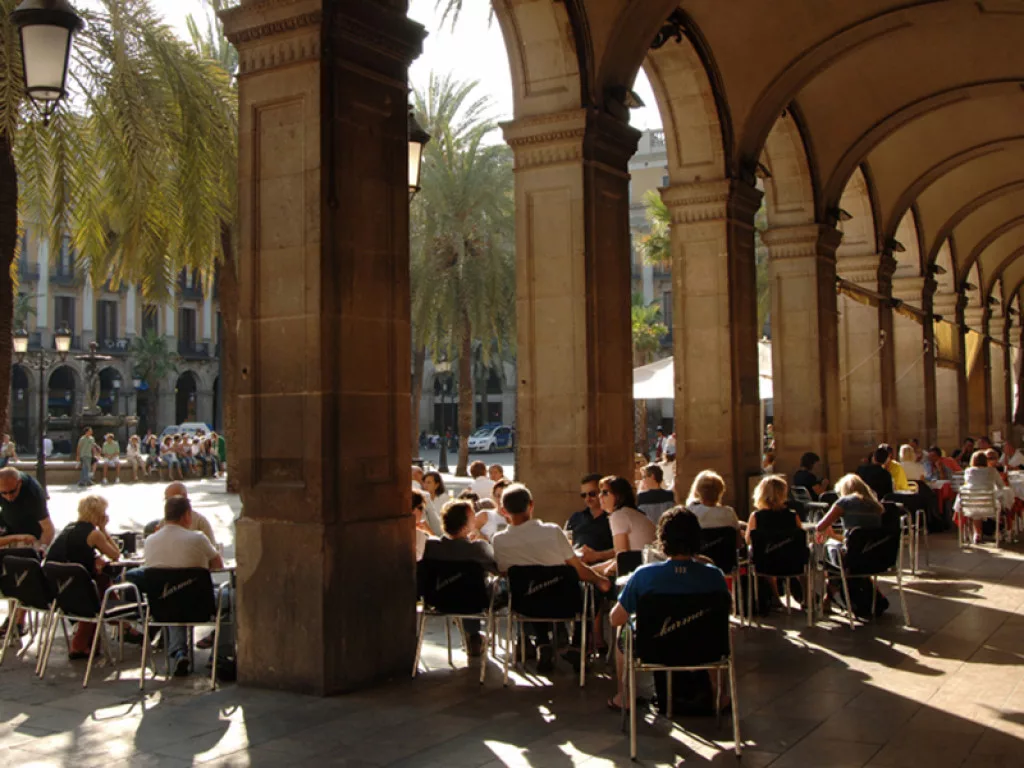
OUTLOOK RECOMMENDS
EAT:
For taking a mooch around the market
The Mercat Sant Josep, known locally as La Boqueria, enjoys a reputation as the best market in all of Spain. Located beyond the Palau de la Virreina, La Boqueria is a feast for the senses, offering seafood straight from the Mediterranean and an unparalleled array of fresh produce. Be sure to stop by the famous snack bar of Pinotxo, near to the Ramblas market entrance.
For a tantalising tapas tour
A tapas crawl promises insight into the least touristy bars in Barcelona, taking in local hotspots in the barris of Poble Sec, Raval and Sant Antoni. Enjoy the centuries-old legacy of the local food culture, sampling ‘picoteo’ – a derivative of the Spanish verb ‘picar’, meaning to take small bites from shared plates. Book a spot on an immersive tour with musement.
DO:
For unbeaten panoramic views
Take a day to enjoy the hilltop views of Montjuïc, offering scenic botanical and sculptural gardens and a seventeenth century castle. The park can be reached by cable car and makes for the perfect sunset stop. Culture vultures can also explore the unrivalled national collections of the Museu Nacional d’Art de Catalunya (MNAC) and the Fundació Joan Miró.
For an out-of-city excusion
Barcelona’s excellent public transport links easily facilitate day excursions to nearby attractions. The mountain monastery of Montserrat, the scenic beach town of Sitges and the museum of Salvador Dalí in Figueres are all accessible in a day. Elsewhere, venture south to the Roman town of Tarragona, or head north to medieval Girona.
SLEEP:
For modern comfort and convenience
The futuristic tower building of the Hyatt Regency Barcelona Tower promises celebrity treatment and world-class service. The hotel is strategically located a 15 minute drive from the city centre, and just five minutes from the airport. Designed by world-famous architect, Richard Rogers, combine your stay with Barcelona’s architectural renown.
For downtown decadence
In the heart of the Gothic Quarter, at Soho House Barcelona you will be spoilt by both location and amenities. With a rooftop pool, subterranean cinema and impeccably decorated rooms, enjoy sea views out to Port Vell and find La Rambla just a two-minute walk away from your room. (Soho House membership compulsory).
IN FOCUS: L’EIXAMPLE
Pronounced ‘lay-sham-pluh’, L’Eixample was born as Barcelona began to outgrow its burgeoning population, fuelled by the industrial growth of the 19th century. Indeed, the vicinity’s name literally translates as ‘expansion’. The district lies at the top of La Rambla, beginning at the Plaça de Catalunya and was originally styled on the boulevards of Paris.
Constructed in the modernist architectural fashion of the time, in this young district you will encounter some of Barcelona’s most iconic highlights, including the Sagrada Família and Gaudi’s masterpieces of the Casa Batlló and La Pedrera on the scenic boulevard Passeig de Gràcia. This central avenue encapsulates the finest examples of Catalan Art Nouveau.
The entire district encompasses six separate neighbourhoods, arranged in a grid-like layoutand separated into Esquerra de l’Eixample and Dreta de l’Eixample (the left and right sides of Eixample, respectively). Despite this breadth, the area is easily explored on foot.
Bursting with happening night spots, high-end restaurants and designer boutiques, L’Eixample is the beating heart of Barcelona.
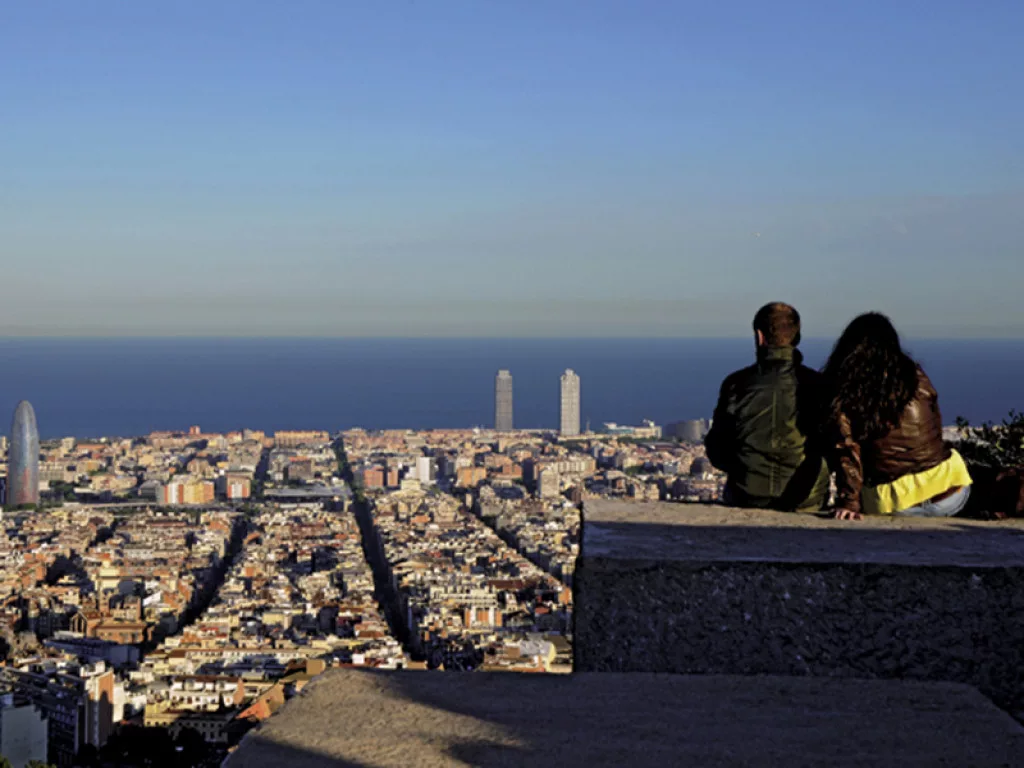
LANDMARK ATTRACTIONS
Parc Güell
A riot of colour in the city’s largest green space, Parc Güell offers the ultimate postcard image of Barcelona. The park was officially opened to the public in 1922 and represents another of Gaudí’s finest masterpieces. The combination of bold mosaics, undulating architecture and ornamental monuments create a dream-like space, overlooking one of the best views of Barcelona.
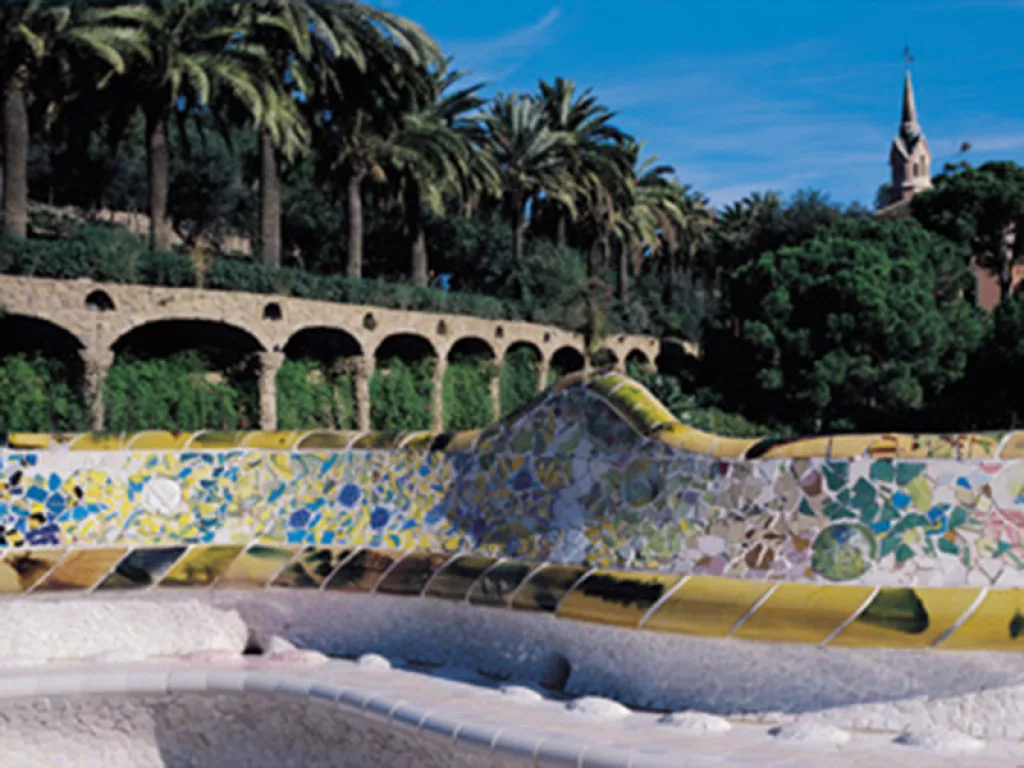
La Sagrada Família
One of the most visited monuments in Spain, la Sagrada Família is a true icon of the Barcelona landscape. This symbolic building, originally intended as a simple Roman Catholic church, represents a celebrated example of Catalan Modernism, conjured by the mind of architect Antoni Gaudí. Officially declared a basilica in 2010, this unique building embodies Gaudí’s philosophy that nature is the work of God.
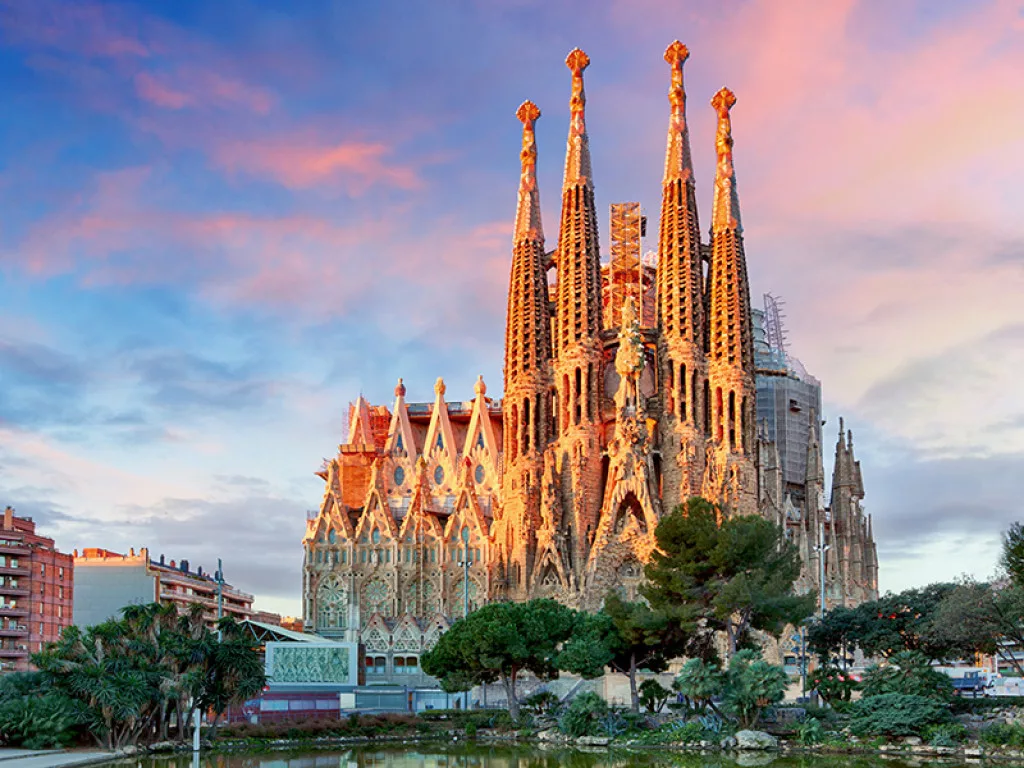
Museu Picasso
This peaceful museum, spread across five medieval palaces, offers the ultimate understanding of Picasso’s formative years, tracing the ascendant path of an artistic genius. The young artist moved to Barcelona aged 14 and spent his adolescence in the city. The museum showcases his early works, whilst also elaborating on Picasso’s bond with Barcelona, and the role this city played in shaping his artistic legacy.
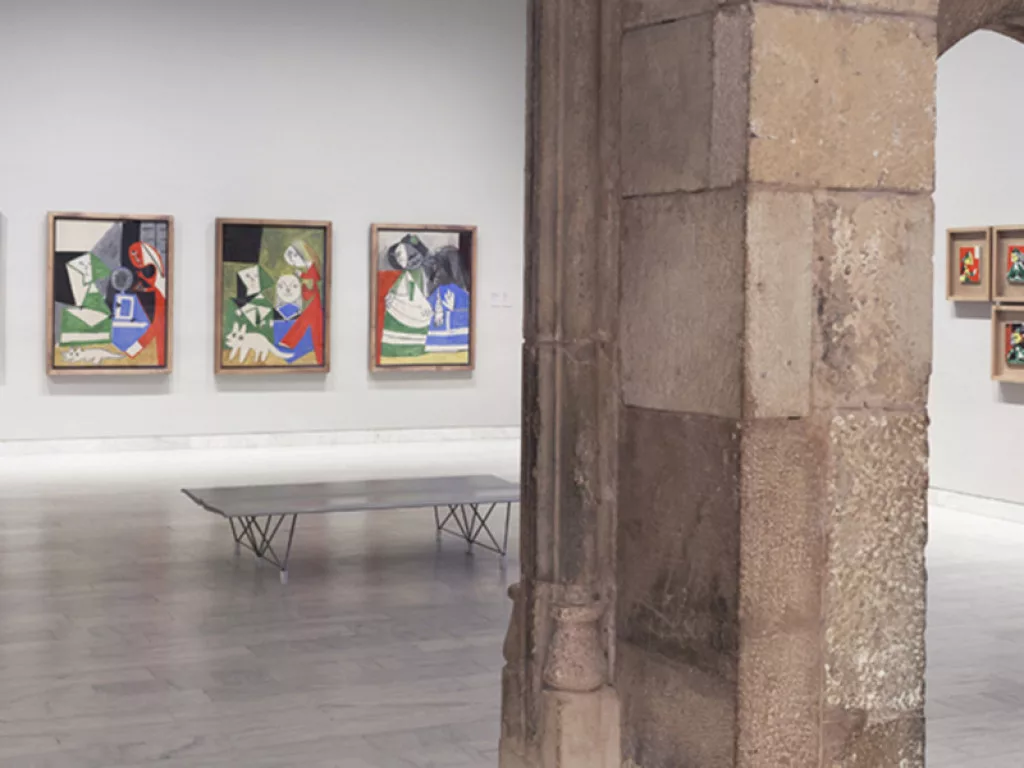
GETTING THERE AND AROUND
Thanks to its compact size and reliable public transport network, Barcelona is easy to get around. If travelling by air, you will arrive at the international airport of Prat de Llobregat, located eight miles southwest of the city.
With most of the main attractions located in the Old City, these are easily reached on foot. Alternatively, in recent years Barcelona has implemented over 200 kilometres of bike lanes, making bicycle hire an attractive and eco-friendly means to explore, available through the city’s public bike hire scheme.
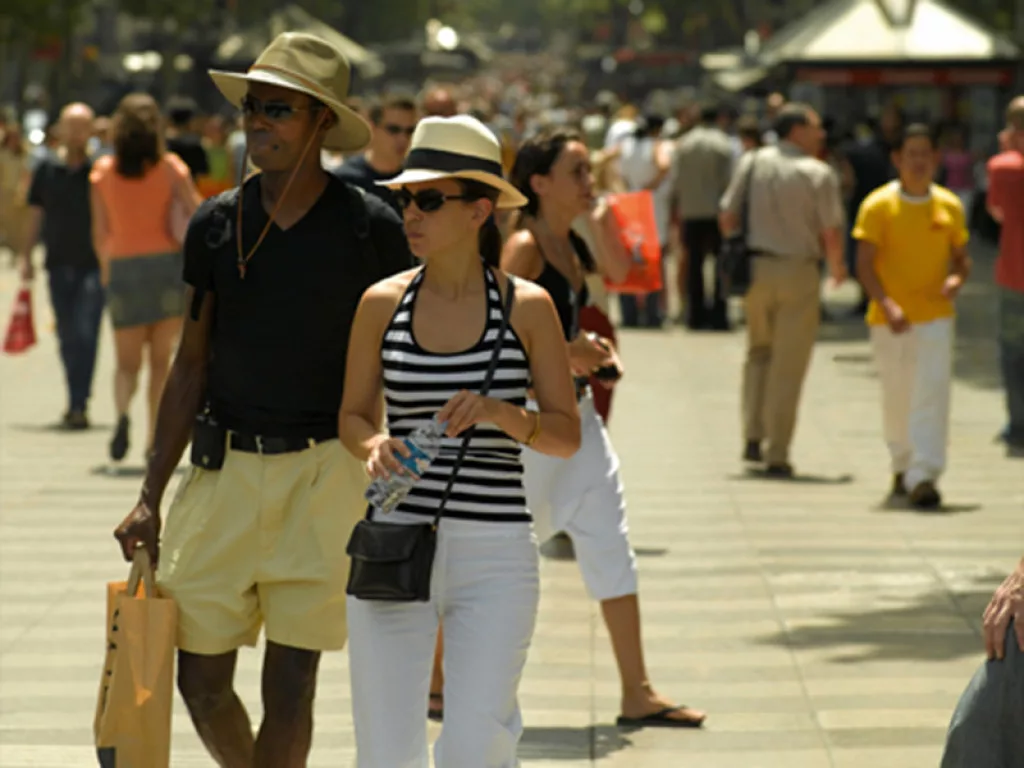
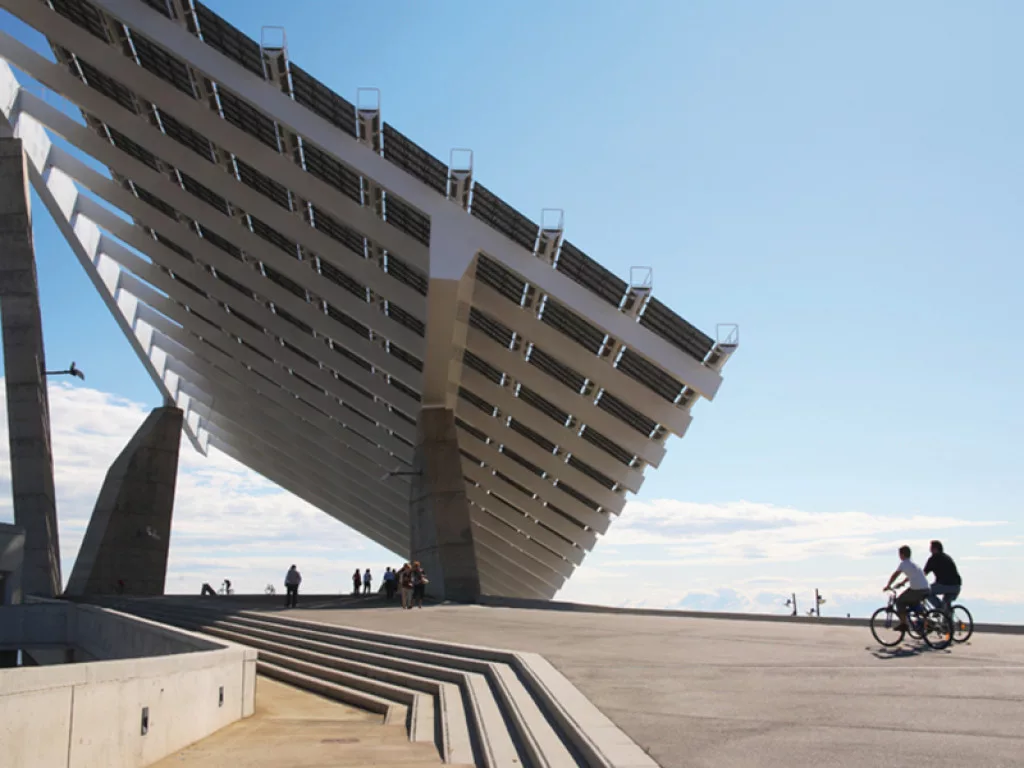
In terms of public transport, this is also becoming increasingly ‘green’. Metros, trams, buses and the suburban rail service (FGC) all prioritise clean energy. You will even find e-bike hire and hybrid or electric taxi fleets to ease your carbon conscience.
The Metro, FGC and tram are the most tourist-friendly options of transport, as fast, cheap and convenient. Visitors to Barcelona can purchase travel cards through an integrated fare system that can be used across Metro, trams, FGC and Renfe trains.
